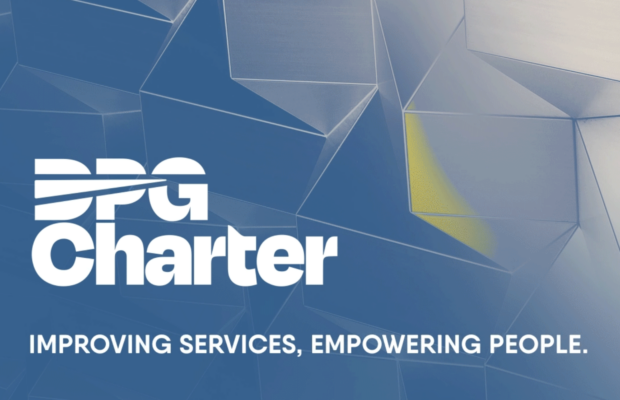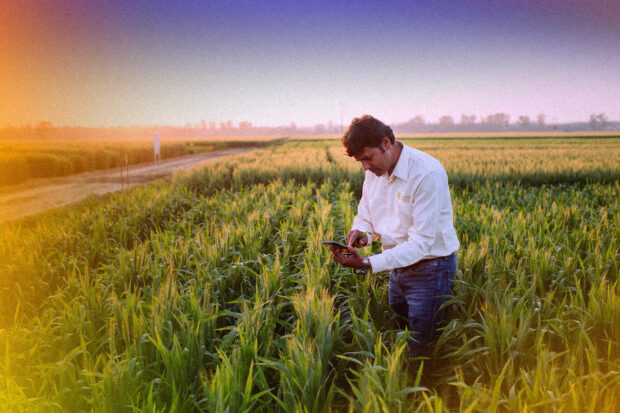Digital public infrastructure (DPI) encompasses the foundational digital layers necessary for powering our daily lives, just as our physical roads, railways, and bridges are crucial to a smooth-running society and economy. The potential for positive impact is vast.
But how can the global community work together to establish safe, trusted, and inclusive DPI – in other words, ‘good DPI’ – that not only powers livelihoods but improves lives?
Technology is important. But so are the supporting ecosystems.
Sustainable financing for the implementation of technology systems is key to the long-term success of DPI – including digital identification (ID), payments, and data exchange systems. But financing the implementation of these systems is only one part of the equation. As governments and donors mobilize new funding in multilateral settings and through bilateral initiatives – and unlock funding that is already available (more on this below) – it is critical that some of this financing is directed toward the non-technology aspects of DPI: the global, regional, and national ecosystems that support countries as they design, deploy, and govern digital systems and services. These ecosystems, which include civil society, academic, and advocacy organizations, are central to the sustainability, security, and utility of DPI.
To better understand the financing needs for DPI beyond the implementation of technical systems, we interviewed more than 25 experts involved in global and national efforts to expand safe, trusted, and inclusive DPI, including those representing:
- Governments that are in the process of designing, deploying, and scaling DPI, including representatives from Sierra Leone and Ukraine.
- International organizations that are providing technical assistance and other types of support directly to these governments, such as UNDP and the World Bank.
- Product owners who design, deploy, and maintain products that are relevant to DPI, including Mojaloop and the Nordic Institute for Interoperability Solutions (NIIS) that maintains X-Road.
- Civil society and research organizations who play a critical role in determining best practices and advocating to ensure that DPI is safe, trusted, and inclusive. Such organizations include the Africa Digital Rights Hub, Digital Planet at Tufts University, and Digital Square.
- Organizations who provide and mobilize financing, including the Bill and Melinda Gates Foundation and Co:Develop.
In 2019, SEEK Consulting conducted research which outlined cost categories and overall cost estimates for many of the non-technology aspects of DPI*. Through our 2023 research, we have updated these categories and estimates to advance our collective understanding of what is required to sustainably finance good DPI.
*This research is unpublished but available upon request.
Investment is required in five critical areas.
This research highlighted gaps in financing for public goods that drive good DPI, across global, regional, and national ecosystems. We’ve bucketed these into five overarching categories.
Global and regional goods:
- Products are systems, tools, and global reference platforms which are maintained globally and are made available for DPI implementation. These products may be open-source, proprietary, or built on an alternative business model. Ideally, countries will have a choice between different products with different business models when developing DPI. As a cost category, investing in products includes the long-term costs of facilitating global cooperation to set common specifications, develop shared requirements, strengthen technical communities, and provide feedback to developers on new features needed.
- Research, evidence, and advocacy includes investments in global, local, and regional organizations that research common problems, develop common training modules (e.g., procurement, Enterprise Architecture, data protection policy), and adapt different approaches to policy and practices in countries. Relevant organizations include associations, think tanks, schools, universities, and accelerators, which require funding, capacity, and authority to help translate best practices to local needs and advocate for global support, where needed.
National ecosystems:
- Intra-government coordination and planning is critical to establishing sustainable DPI and includes preparation, coordination, and planning. The exact work will vary country-to-country. In most cases, it will include working across ministries to gain input and buy-in for DPI investments that cut across existing silos, establishing a technical roadmap, and training relevant staff, updating procurement mechanisms, and setting up relevant innovation teams or offices, such as open-source program offices (OSPOs).
- Citizen engagement is essential in the early phases of the design and roll out of new systems. This includes using radio, television, social media, and other channels to ensure that all individuals and communities are aware of and included in DPI on-boarding, particularly those more likely to be excluded, such as women, rural communities, and people with disabilities.
- Safeguards and redressal mechanisms, which in many cases are implemented through data protection offices (DPOs.) DPOs must be established and have sufficient funding and independence to maintain appropriate staffing levels, keep staff trained, and grow as needs increase. The appropriate size will depend on the country, both in terms of population size and the maturity of other mechanisms for protecting rights and freedoms, including civil society, media, and the justice system.
Mobilizing investment is less a matter of money but political will.
We estimate that 130-150 million USD per year is needed over the next five years to support global and regional goods, and 280-300 million USD per year is needed to finance national ecosystems in 50 countries*. While these numbers are significant, we do not expect this to be entirely new financing. Rather, this financing can come from existing global funds earmarked to support specific sectors (i.e., health, agriculture, or climate) since DPI is a cross-cutting enabler of impact that accelerates all the Sustainable Development Goals. In future, we expect these numbers to change as the global understanding of good DPI evolves and matures.
Understanding these economies of scale will help to ensure that ecosystems are financed and sustained over the long-term, as costs decrease but do not disappear. The global community is often more inclined to fund start-up expenses (CAPEX) than on-going operational expenses (OPEX), and it is true that DPI ecosystems require larger amounts of investment in the early stages. However, many aspects of global, regional, and national ecosystems require long-term funding to maintain capacity, drive innovation, and adapt to market realities. This is particularly true for institutions that increase citizen awareness and protect safeguards, such as DPOs.
* This estimate is based on our interviews, which provided estimates of how much is currently being spent on each item. We used these estimates as proxies to extrapolate how much is needed at scale, and over time. Thus, it is important to note that these estimates are based more on the DPI finance “as is” than “as it should be.” For more detailed estimates and explanation of our methodology, reach out to info@dial.global.
Investment in the non-technology aspects is worth the cost.
Financing global and regional goods delivers economies of scale. Investments in ecosystems helps quickly scale DPI, with costs lowering with each new implementation. For example, X-Road, which is maintained centrally by Estonia, Finland, and Iceland (through the ecosystem actor NIIS) at a cost of 2.5 million Euros per year, can be implemented by new countries at an average cost of $300,000 per year.
Global and regional ecosystem products and institutions also help to efficiently share improvements in global issues, such as cybersecurity and inclusion across countries.
Where do we go from here?
There is increasing global consensus on the ability of DPI to accelerate inclusive development, and growing political support for the approach as evidenced by the strong language agreed upon in the G20 Leader’s Declaration in September 2023. This includes mention of the effort to design and launch the One Future Alliance to build global cooperation for providing technical assistance and adequate funding for DPI in lower to middle income countries. These efforts to scale the implementation of the technical systems behind good DPI are critical. However, efforts will be far more effective in creating sustainable, positive change for people and communities if they also support these five key aspects of global, regional, and national ecosystems.
Furthermore, additional research will help to unlock and channel appropriate financing if focused on topics including:
- Tracking financing for DPI: Despite efforts by OECD and others, we were unable to find sufficient data on current financing for DPI, including which areas of DPI receive the most funding (although, anecdotally, all interviewees agreed that there is more funding for technical implementation than the non-technical aspects).
- Unpacking financing options and their implications: Every country will take a different approach to DPI. Regardless, financing is likely to come from a combination of private capital, government investment paid for through loans and/or taxation, and philanthropic funds. Each of these sources has different implications for sustainability and inclusivity – for example, private sector-led financing often leads to fees for companies, which are then passed on to individuals in the form of higher prices, while a reliance on donor funding is inherently unsustainable over the long-term. DPI investments will be more sustainable and effective if the implications of different types of financing are clear at the start.
- Understanding how design choices impact the ability of DPI to include and empower: We know that certain segments of the population are more likely to be excluded from or potentially disadvantaged by DPI. For example, women already experience gaps in access to digital tools and financial services, which decrease their ability to benefit from DPI. Furthermore, as more countries build DPI that is open to innovation, women will be further left behind if they continue to have unequal access to private capital for start-up enterprises. To effectively leverage financing, we must deepen our understanding of the ways in which DPI can be designed, deployed, and governed to improve, rather than exacerbate, these existing inequalities.







